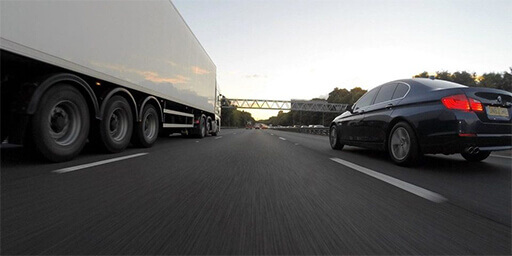Those who are not particularly familiar with the field of self-driving transportation may think that the notion of a self-driving truck died out after Uber recently announced the discontinuation of its self-driving truck program. However, Uber was only one of several companies trying to put together this revolutionary technology, and while there is still plenty of work to be done, there’s a chance of us seeing automated truck fleets in our lifetime. Here’s some more info on the current state of the technology and some of the remaining roadblocks.
The Automation Question
One issue that we should discuss outright when it comes to automation is the fear that human truck drivers are going to be an endangered species with the advent of self-driving vehicles. Studies show that this is not likely to be the case. The results that the American Center for Mobility (ACM) commissioned from Michigan State University and Texas A&M’s Transportation Institute showed that the purpose of self-driving trucks is going to be more about supporting existing drivers than replacing them. This makes a lot of sense when you consider the current trucker shortage. Self-driving trucks, when they are ready to hit the road, will need to fill that deficit before any concern comes up about taking up other jobs.
As for the current state of the technology, while many industry veterans may be skeptical of how well a truck can drive itself, things are well on their way. In a profile of the industry by MIT Technology Review, Greg Murphy, a professional truck driver with 40 years of experience, said that these trucks drove better than he could on occasion. While Uber’s halt on pursuing the technology (largely due to legal reasons) takes one player out of the equation, several other companies, like Tesla, Volvo, Peterbilt, and Daimler are all trying to pick up the slack. With this said, even the most optimistic projections don’t see self-driving trucks really taking hold for at least another 5-10 years.
Current Issues
Part of this is integrating self-driving trucks into a road ecosystem full of human drivers, but another major roadblock is existing legal concerns. As of right now, there is no obvious current legal path for suing a self-driving truck who hits and kills those outside of the truck. In a traditional situation, the plaintiff could sue the truck driver and the company that hired them, but with no truck driver, this suddenly becomes a lot more difficult. In addition, there are no laws on the books that allow manufacturers to be held responsible for failures in self-driving technology. It may very well be lawmakers who make the final call on when we get to see self-driving trucks.
While technology marches on, it still may be some time before you see a self-driving truck fully integrated into your supply chain. However, there are many tools right now that are available to help you improve your efficiency at the shipping level as well as on the road. This is where #HwyHaul comes in, a technology platform designed to change the field of logistics, from the largest shipping companies to smaller operations. Our goal is Connecting Enterprises to Truckers – Seamlessly! If you’re interested in learning more about HwyHaul, contact us
